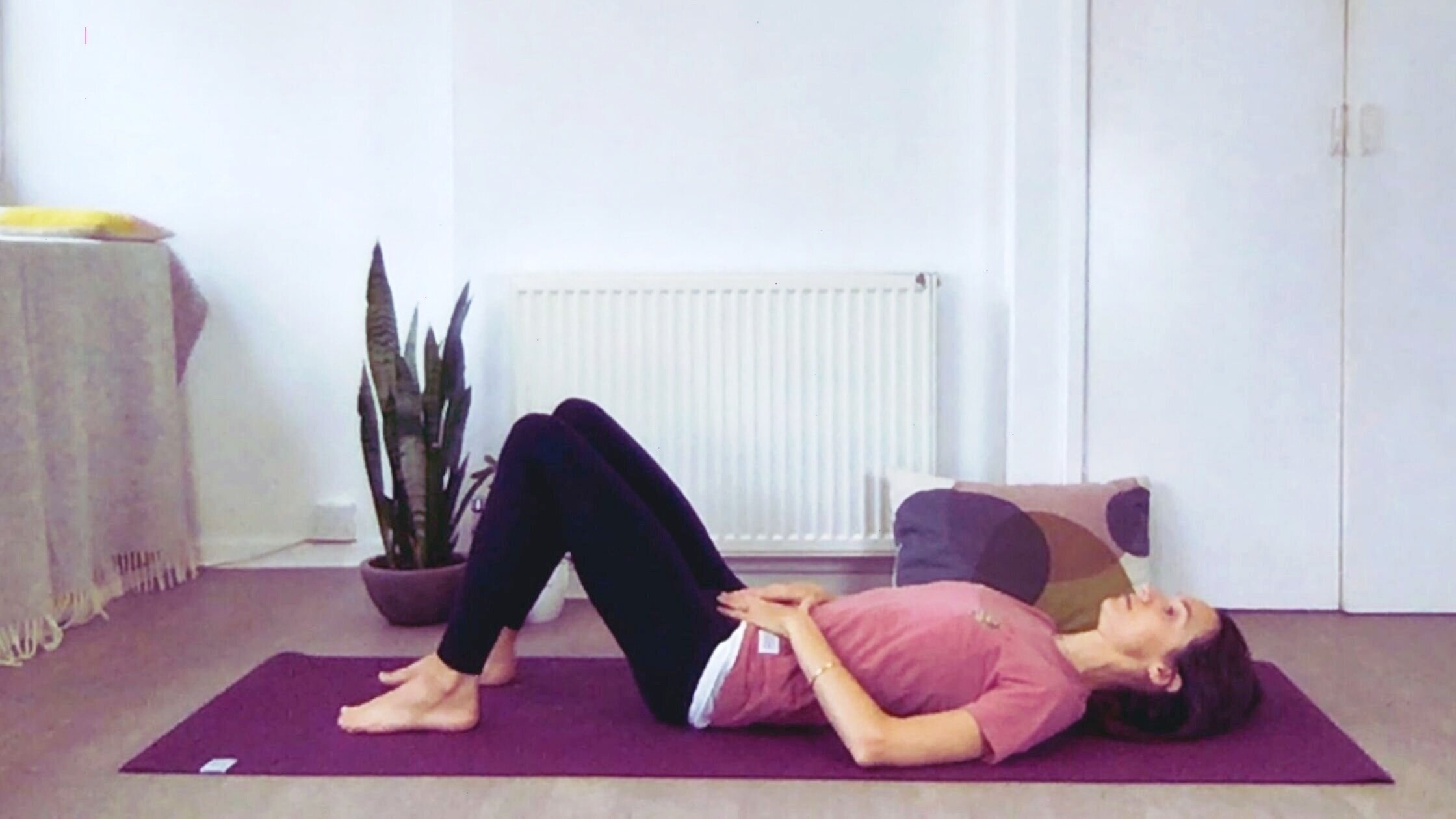How to heal and strengthen your pelvic floor after birth
Reconnecting with, and gradually restoring strength and function in the pelvic floor after birth (including after a Caesarean birth) is one of the key aspects of your postnatal recovery.
Chances are a midwife or consultant will have advised you to 'remember to do your pelvic floor exercises' when discharging you from hospital or maternity unit. But this can be easier said than done, especially when this part of your body might still feel numb or ‘out of reach’. And time is so scarce too!
In this short blog, I share with you 3 key tips which I share in all my mum & baby and postnatal yoga classes to help you do this, and gradually progress your pelvic floor healing back towards optimal function.
1 - Start in a lying position
To start with, I suggest you try to do your pelvic floor exercises in the neutral back lying position below (also called ‘constructive rest’). In this position, your pelvic floor doesn’t have to handle the weight and downward pressure of your organs, meaning it’s a little easier (or a bit less hard!) to try and lift up your pelvic floor muscles, and then less ‘scary’ to let them release down without the fear of any leakage. It’s also much easier to breathe fully, which is an essential part of re-engaging with the pelvic floor (see tip 3 below!), and it also means you can do this while lying in bed! You can also try it while side-lying.
As you start gaining more control, you can then move to practicing your pelvic floor exercises in order positions, including sitting, standing, and on all fours (which are all more challenging in various ways).
2 - Focus on the back passage
If you have attended my pelvic floor for pregnancy, birth & beyond workshop, you will know that the strongest part of the pelvic floor are the muscles that surround the back passage (the muscles that enable you to squeeze and release your anus). These muscles are therefore the easiest to find and re-engage with, and will drive the other parts of the pelvic floor to engage too.
To engage the back part of the pelvic floor, squeeze and lift your back passage as if you were trying to stop passing a wind, then slowly release. As your awareness and control grows, you can then try to focus more on the other parts of the pelvic floor, especially the front muscles (that allow you to stop the flow of wee, which are weaker and so harder to find).
3 - Use your breath
This is absolutely key. The pelvic floor is part of your core, and the core is designed to move with the breath! As we inhale, the pelvic floor expands and releases, and as we exhale, it contracts and lifts up. Learning, or re-learning to breathe fully and reconnecting with the natural movement of the pelvic floor is an essential part of your postnatal recovery.
Despite some common, misleading advice to do as ‘many pelvic floor squeezes a day, whenever you remember’, focusing on quality over quantity by working mindfully with the breath can lead to much better results, and make these exercises actually feel nourishing rather than a chore.
In the CPR position above, take the time to establish a full breath. As you exhale, lift the pelvic floor, and release as you inhale. Repeat a few times, taking a pause any time to loose awareness of lifting and/or releasing.
If you would like more tips and guidance on how to re-engage and re-strengthen your pelvic floor after birth, or would like to know how to effectively support your whole postnatal recovery (it’s not just about the pelvic floor!), have a look at my Postnatal Recovery Essentials recorded workshop, which explores all these aspects and much, more more in an easy and accessible way.
Should you wish to have personalised support based on your birth experience and postnatal recovery so far, I offer 1:1 postnatal yoga support in-person in the comfort of your home or remotely via Zoom. Please contact me for details or you can book a (free) chat here.

